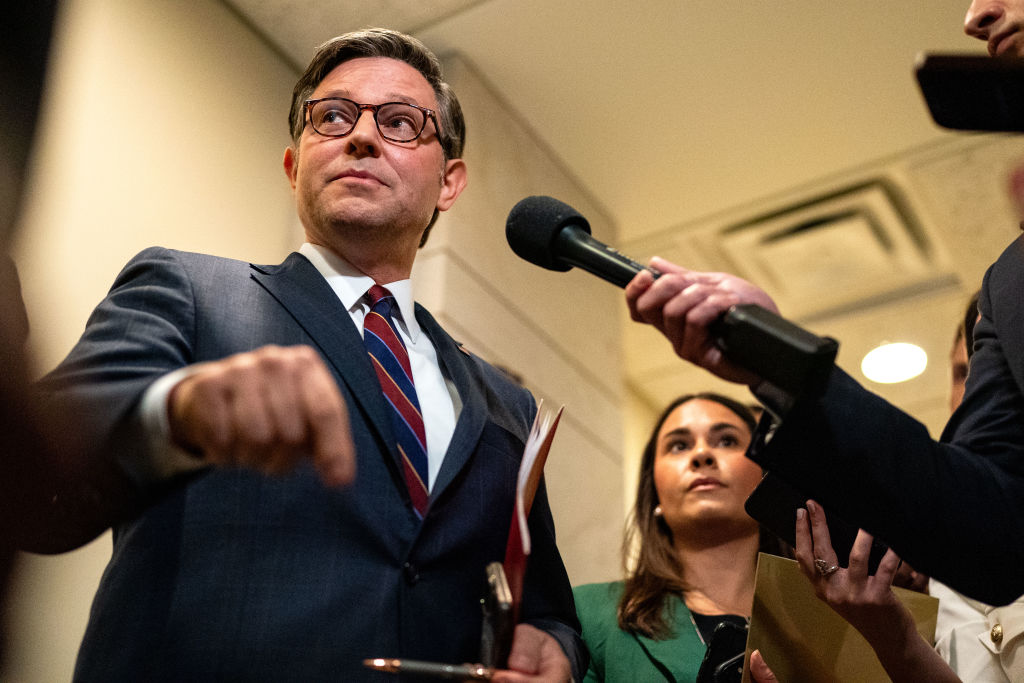Speaker Mike Johnson and the House Republican leadership will host a call this morning for all GOP lawmakers to review his plan to fund federal agencies past the Sept. 30 deadline.
Johnson’s plan, as we’ve been detailing for the last few days, is to pass a six-month extension of government funding coupled with the SAVE Act. The SAVE Act requires proof of citizenship before registering to vote in a federal election.
It’s safe to say that this proposal is going absolutely nowhere fast in the Senate. Most savvy aides and lawmakers in the House Republican Conference understand that. Democratic leaders and the White House aren’t interested in the SAVE Act. Democrats we’ve spoken to in the House, Senate and White House also say that they want the stopgap to expire in December rather than March.
This is a pretty predictable move by Johnson. So we’re going to dissect the pros and cons for the speaker here.
The pluses. In case you needed a reminder, former President Donald Trump dominates the House Republican Conference and the larger GOP. Trump did so as president and after he left Washington. And now that he’s the GOP presidential nominee locked in a dead heat for the White House, his influence is seen again here.
Trump has been publicly and privately pressing for Johnson to include the SAVE Act as part of any short-term funding package. We’re not saying that Johnson wouldn’t have come to this conclusion on his own. But if you talk to the people who are truly in charge — meaning most of the House Republican leadership and GOP appropriators — they think this plan is futile.
So in taking this path, Johnson scores some points with Trump and his backers in Congress. And you know Trump is watching.
Furthermore, House Republicans traditionally have an insatiable appetite for their leaders picking fights, regardless of whether they have a chance of winning. Johnson will gain favor with GOP hardliners for having this fight with the Senate and White House, even though Democrats and many Republicans acknowledge that Johnson can’t win.
House Republicans’ stated goal this month is to choose battles that unite Republicans and divide Democrats. This does have the prospect of dividing Democrats — five Democrats voted for the SAFE Act in July.
The minuses. We think the minuses here outweigh any perceived benefits.
Let’s start with the simple fact that this maneuver will be tough for Republicans and isn’t certain to pass the House. We’ve already seen some Republicans say that this isn’t a winning tactic.
Since becoming speaker 315 days ago, Johnson has twisted himself into pretzels to avoid government shutdowns. Remember the “laddered CR?” So there’s no reason to believe that the speaker would risk a shutdown at the end of September, just five weeks before Election Day.
And imagine if this doesn’t pass the House? What if Johnson can’t bring this proposal to the floor? That would weaken his hand immeasurably in any spending negotiations going forward.
But how about when Johnson inevitably folds here? What will Republicans think of him then?
Also consider the implications of punting government funding until March. That means that Congress has no must-pass legislative vehicles in December to finish up its business beyond the annual defense authorization bill. There are a host of things that need to be done too, including raising the debt limit.
Parts of the farm bill expire on Sept. 30, while other sections expire at the end of the year. The federal government’s Counter-Unmanned Aircraft Systems authority runs out at the end of September. Medicaid and health care provisions that need to be renewed. Plus, Maryland is still seeking billions of dollars to rebuild the Francis Scott Key Bridge, and Free State lawmakers want the feds to pick up the full tab.
A six-month CR is also a very complicated bill to draft. There are spending “anomalies” that must be addressed across a host of federal agencies and departments. The Department of Veterans Affairs has warned of a $15 billion funding shortfall by the end of the fiscal year due to increased spending under the PACT Act. The White House wants billions of dollars for the WIC food program and Social Security Administration, among dozens of other requests. The Pentagon will have concerns.
Team Trump, which is pushing this CR play, also seems to be underestimating just how disruptive a March 31 deadline would be if Trump wins. March 31 is just 70 days into the new term. If Trump is elected, he’ll have to spend the majority of his first 100 days wrangling over funding. This is all but guaranteed to crimp a critical period in Trump’s return to power. Trump went through this in 2017 and it didn’t go well.





